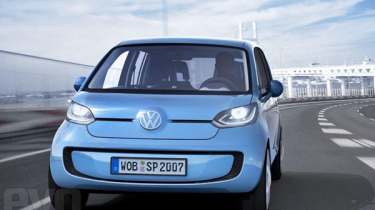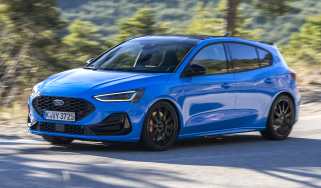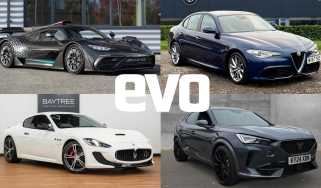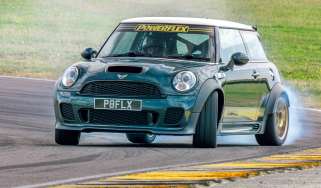VW: looking ahead
Volkswagen bins new designs, starts again
As Volkswagen readies the next-generation Golf, to be launched in September, the scale of the changes at Volkswagen's design department becomes clear. Put simply, when former Volkswagen Group R&D chief Martin Winterkorn returned to the company in January 2007 as chairman of the management board, having been in academia in the interim, he looked at Volkswagen's upcoming designs and binned the lot. Former design chief Murat Gunak left as well, his place taken by Walter de'Silva who was already at Audi. De'Silva's design deputy, Klaus Bischoff, explained 'We had done the Golf but we had to start again. We had done the IROC concept car too, but to make it into the Scirocco we had to change not just the nose but also the rear and the sides.' Any other casualties? What about the Polo? That's been around for a long time now and seems to have fallen off the UK buyer's radar. 'Yes, the Polo was revised too from the proposed redesign. We started again, which takes a long time. The new one will be lower and wider. It's another reinterpretation of our new design language and it could be even more radical than the new Golf will be. It's a completely different direction, and it will be masculine and sporty.' Bischoff also confirmed that the Beetle, 10 years old this autumn, will be replaced by another reinterpretation of the original rear-engined Beetle, proving that Volkswagen still thinks there's life in the retro-reinvention idea. There will also be a minor facelift for the flagship Phaeton, followed by a major one; Bischoff designed the original's interior and remembers Volkswagen Group overlord Ferdinand Piëch insisting on interior quality better than a Bentley's but at much lower cost. Two new saloons, respectively larger than a Jetta and a Passat, will be designed for the US and Chinese markets, but they too will conform to the new Volkswagen design edict. Which is? Simplicity, a confident identity which shows that Volkswagen isn't copying other carmakers, and much use of horizontals in the nose as shown by the Scirocco because the shield-shaped grille has run its course. 'Form must follow function,' says Bischoff, 'and a car must not be over-designed. For example, there must be no elongated headlights more visible from the side than from the front, because that is not what a headlight is for.' The most interesting Volkswagen idea of recent times was the tiny Up! mini-car, basic and cute and shown as a concept with a Smart-like rear engine. It was planned for launch in 2010 but has hit a few snags along the way, one of which is that rear engine. 'It was not fully thought through as a concept,' says Bischoff, 'and it may yet be front-wheel drive because of cost and aerodynamics.' It turns out that being tall and rear-engined, the Up! is unstable in crosswinds in a way which might have been acceptable to buyers of an original Beetle but isn't acceptable now. There was also a problem with getting enough cooling air to the engine. 'We'd have had to make dramatic design changes to make it work, so it's better to use front-wheel drive and get back to the original look. It will have an interior that will be unusual – we're deeply into metal-sheet doors. 'By the time the Up! comes, a lot of product will have been renewed and there will be a feeling of functionality. The Up! will fit well.' Volkswagen, then, is going back to what made its reputation: crisply-detailed functionality. Next on the production agenda will be a 'one-litre' car, able to travel 100km on one litre of fuel. That's 282.5mpg.



